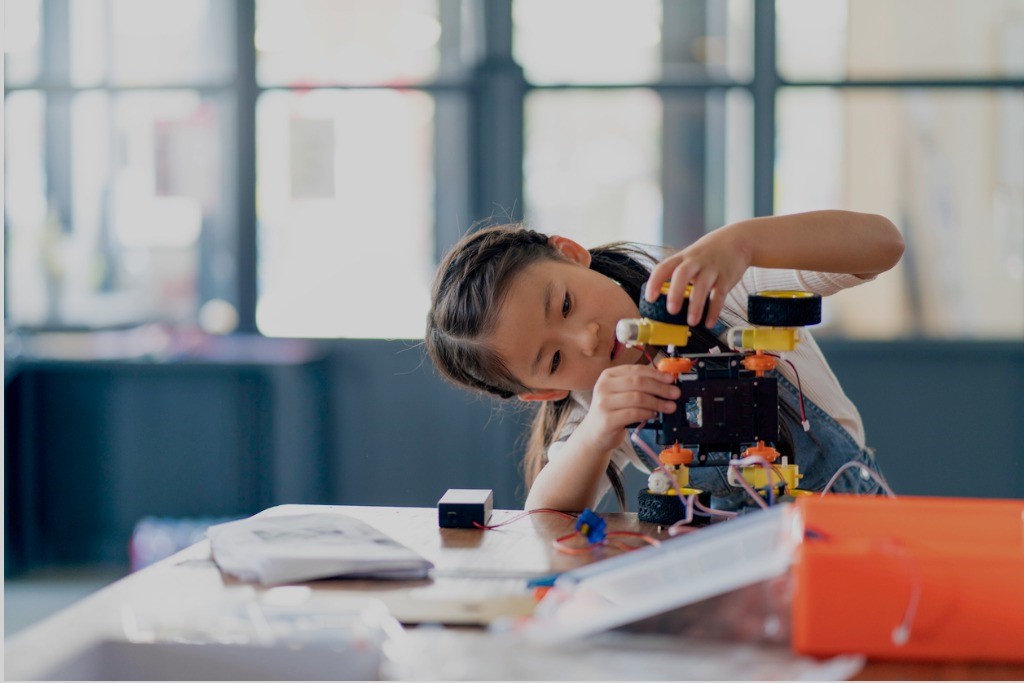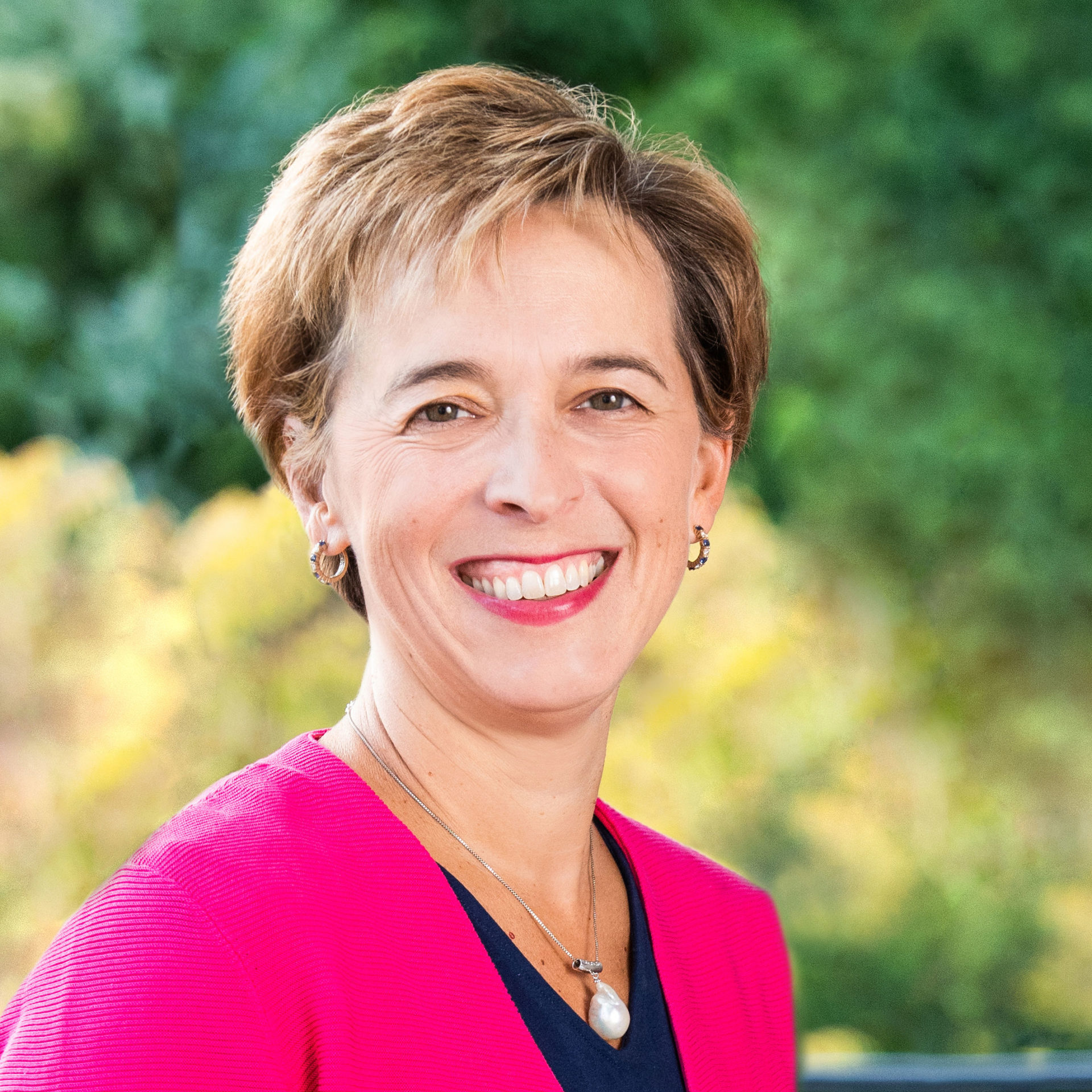We are asking a system designed on the principle of control, compliance, and consumption to change to its opposite, that is, a system of agency, autonomy, and creativity. If we are serious about real change, we need to start asking ourselves: What needs to end?
Julie Wilson, Author of The Human Side of Education
While observing the first-ever virtual student public exhibition at Pathways High in early February this year, I saw a glimpse of what’s possible in a future where the education system is fully committed to student agency, autonomy, and creativity. That day, students in grades 9 – 12 showcased to the community, via Zoom, a project they had completed within the last two academic quarters.
The presentations impressed me not because of their polish or perfection, but because of the authenticity of the learning—the academic content, skills, and learning process—that was demonstrated. Specifically, because the projects involved an iterative creative process, the students insightfully described the learning, and frustration, that comes from trial and error and the application of new knowledge and skills. Their presentations demonstrated that they were learning how to learn.
The students’ engagement, enthusiasm, understanding, and pride in their work was palpable. Sadly though, a nagging worry crept into my thoughts: How will these examples of deeper learning translate into scores on standardized tests?
What Needs to End?
Standardized tests like the PSAT/SAT and ACT Aspire/ACT still endure as the gatekeepers to entry into most colleges and the metrics for assessing the quality of high schools themselves. And, while not every student’s path leads them to pursue admission into a higher educational institution, it is still a path chosen by nearly two million learners each year.
For young people engaged in learner-centered education in high school, it must be a jarring experience to sit down at a proctored exam with the understanding that this fill-in-the-bubble test is what their next educational institution values most. And, that they will be swiftly flung right back into an industrialized, compliance-based system they excitedly left behind while attending their K-12 learner-centered school.
When learner-centered schools, like Pathways High, work to transform education, they take full control over many of the design elements—core values, culture, curriculum format, teaching practices, to name a few—that unleash learner agency, autonomy, and creativity. However, at the end of a unique learning journey that introduces them to new ways of thinking, discovering, and dreaming, learners are confronted with these standardized assessments that measure none of those valuable outcomes.
Compounding the problem of these misaligned assessments is their well-documented, inherent bias that favors those who can afford SAT/ACT coaches and test prep, and the persistence in using the tests to measure achievement gaps.
If we are serious about truly transforming our education system, then we should cease being tethered to narrow, anachronistic, and biased assessments that do a disservice to all young people by placing them in a box, unable to demonstrate the powerful, authentic learning that I witnessed in February.
Imagining a Different Way
Ending the use of the SAT/ACT for college admissions and measures of high school quality does not mean an abdication of accountability in learner-centered schools. Quite the opposite. It is a call to identify the assessments that will measure the full breadth of knowledge, skills, and spirit of exploration that learners around the country are developing and that lead to fulfilling and successful lives—each unique to the individual learner.
Imagining a different way starts with being clear about what we value most for our community and nation. I think again of the young people at Pathways High; I think about how their projects showcased a passion for the journey of learning and a desire to make a difference in the world.
For example, Kyla, a sophomore, along with a team of five students, researched, designed, and pitched a new immersive and interactive exhibit concept for the Milwaukee Public Museum’s new location. The students worked with a real client, the museum’s Chief Planning Officer, who was so impressed by the students’ work that she asked them to continue their collaboration through the implementation of the new exhibit.
“We can do this!” was the enthusiastic sentiment expressed by one of the students as she reflected on the project and its longer-term impact on the community. It is an example of how doing real work that matters to a broad audience can be incredibly inspiring and exhilarating for learners.
Rather than seek a new silver bullet metric, similar to the SAT/ACT, embracing the complexity of a learner-centered assessment is more likely to recognize and unleash all learners’ potential.
Julia Burns, Co-Founder and Board President, Pathways High
The complexity of this project also demonstrates the diversity of knowledge and skills that are cultivated when learning is given a real-world context, such as research, design thinking, collaboration, gaining a deepened understanding of Native American history, computer-based modeling, presentation design, public speaking, interviewing, and effective incorporation of feedback.
When I reflect on this type of rigorous learning I return again to: How can it best be represented to others in an assessment of learning?
Rather than seek a new silver bullet metric, similar to the SAT/ACT, embracing the complexity of a learner-centered assessment is more likely to recognize and unleash all learners’ potential.
According to Brennan Barnard, Richard Weissbourd, and Trisha Ross Anderson at the Making Caring Common project at Harvard, “…too often, colleges have measured what’s easily measurable and not what’s meaningful for success and citizenship in school and life. The hope now is that they can put greater substance into their promise of ‘holistic’ admissions and develop new ways to evaluate achievement and promise.”
Contributions from a variety of stakeholders should be sought for the development of learner-centered assessments that honor the extensive diversity of learners and their pathways. The Mastery Transcript Consortium and its 380+ members would be excellent resources to tap to explore how a portfolio or résumé representing a learner’s skills, content knowledge, and dispositions could be incorporated into an assessment.
As the Making Caring Common project queried, “What if portfolios of class work from different disciplines could be evaluated by expert third-party reviewers, who would provide a [normed] rating?” Reviewing and evaluating portfolios will require a greater investment in time and resources by postsecondary institutions, but changes to the college admissions process should not constrain our collective ability to imagine a new way forward.
No matter what assessment solutions we come up with, it’s not just the higher-education community that we need to be in conversation with. We also need to be in conversation with the philanthropic community.
Philanthropy’s Role in Propelling Learner-Centered Transformation
In most cases, the results of standardized assessments are the drivers determining philanthropic investments, a critical component in enabling young charter schools, like Pathways High, to scale appropriately to sustain their learning culture and thrive.
In the February 2021 issue of Voyager Monthly, Kelly Young insightfully highlighted the repeated challenge Pathways High and other schools like it confront: “Without philanthropy seeing the distinction (between education transformation and reform), money will continue to only drip into the learner-centered field and flow abundantly within the innovative reform space.”
The result? Schools are only able to supplement, not transform the conventional system.
While it is challenging to overcome the status quo, especially as it relates to standardized assessments that have been in place for many decades, I am encouraged both by those foundations and other philanthropic leaders who have supported transformation work for decades and by some of the recent strategic changes introduced by other education funders.
For example, last month, the Walton Foundation announced their 5-year strategic plan, that includes mention of supporting work that could “challenge existing notions of what school looks like, and where and how learning happens…”
Having control over designing the elements that are fundamental to how learning communities and young people see the world, must be rewarded with assessments worthy of the powerful learning happening in those settings.
Julia Burns, Co-Founder and Board President, Pathways High
I am hopeful that the emergence of this language could signal a broader shift in priorities and practices within the philanthropic community. And, more specifically, I’m hopeful that there will be even more leaders, foundations, and entities stepping up to underwrite more disruptive and imaginative ideas in education.
Reason for optimism can also be seen in higher education with the test optional movement. According to a recent article in The Hechinger Report, by the end of 2019, 25% of colleges and universities were ACT/SAT test optional. In the same report, it was noted that, due to the pandemic, two-thirds of colleges are test optional, and many have stated they will remain test optional after the pandemic ends.
This signals that higher education institutions are slowly waking up to the reality that standardized tests are not a predictor of performance and opens the door to imagining different types of assessment that showcase the unique skills individual learners gain in school.
These are tremendous beacons of hope for young people who greatly value the autonomy, creativity, and empowerment enabled by their learner-centered communities, and decide that they want their next learning journey to continue into college, or other post-secondary institutions that require proof of competency.
Having Your Cake and Eating it, Too
But, you might wonder, can’t we transform education and retain the assessments we’re familiar with? What at first might appear as a tempting compromise to have your cake and eat it, too, quickly reveals itself as an impossibility. As Julie Wilson eloquently states in The Human Side of Changing Education, The school-centered and learner-centered paths are opposites of each other in every way.
One path defines and measures learning as quantitative—rewarding memorization of greater quantities of known information and getting the least multiple-choice questions wrong within a time constraint. The other path defines and measures learning as qualitative—rewarding collaboration in solving complex problems with unknown answers.
It’s not just that the quantitative path crowds out the learning opportunities of the qualitative path given the finite hours in a day; it’s that the two paths require fundamentally different systems with different cultures, mindsets, processes, and assessments.
Living with both, let alone trying to excel at both, is unpleasant and unsustainable for educators, leaders, and young learners in the system. Having control over designing the elements that are fundamental to how learning communities and young people see the world, must be rewarded with assessments worthy of the powerful learning happening in those settings.
This all points to the reality that strong philanthropic support that accelerates the development and broad implementation of learner-centered assessments is critical to propelling transformation toward an education system that centers agency, autonomy, and creativity. And, this is an implementation that can be done in a collaborative way by tapping the critical mass of learners, educators, and learner-centered leaders yearning to steward this transformation.

